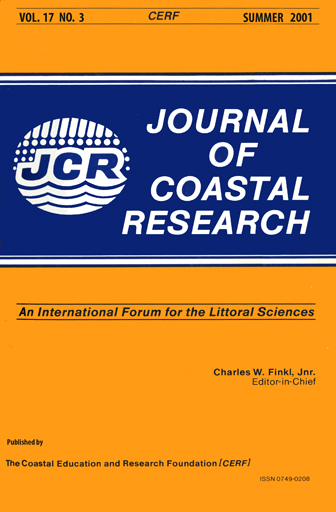A Rip Current Model Based on a Hypothesized Wave/Current Interaction
Keywords:
Nearshore processes, surf-zone circulation, wave dissipation, hydrodynamics, planar beachAbstract
What causes strong, focused rip currents to develop on planar beaches? Observations of waves in the presence of rip currents suggest an interaction between waves and currents that causes wave dissipation. A hypothesized mechanism that would cause such an interaction plays a key role in a rip current model. In this model rip currents can be self-organized, rather than being necessarily forced by bathymetric features or incident wave patterns. The variables in this cellular numerical model interact according to rules that are either direct applications of equations, or abstractions of physical principles. Key processes in the model include: 1) the hypothesized wave-current interaction ; 2) onshore water transport by waves; 3) offshore flow caused by differences between local radiation-stress gradients and surface-slope-generated pressure gradients, 4) alongshore flow driven by alongshore water surface slopes, 5) alongshore mixing of offshore-current momentum, and 6) time and space variations in incident wave heights . Model results indicate that interactions and feedbacks between these processes offer a plausible explanation for why rip currents are often narrow and jet -like while also widely spaced, why they can occur on planar beaches as well those with alongshore bathymetric variations, and why they are generally dynamic rather than steady state phenomena.Downloads
Published
2001-07-27
Issue
Section
Articles


